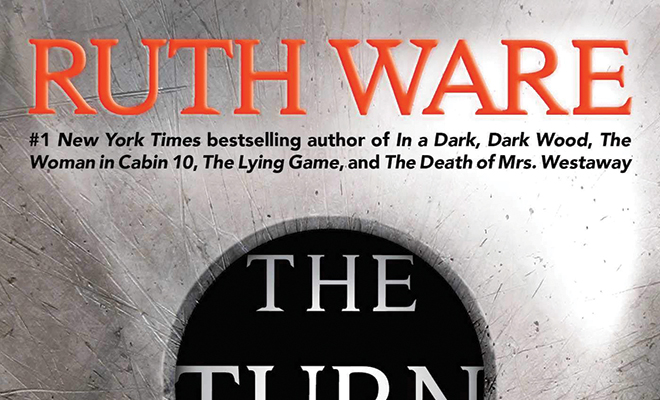
The Turn of the Key by Ruth Ware
Pegged as the 21st-century Agatha Christie, British author Ruth Ware holds her own in the mystery genre. Her latest novel, The Turn of the Key, delivers with unstoppable, page-turning prose.
Reminiscent of a gothic ghost story from a bygone era, Ware’s newest protagonist, Rowan Caine, demands your attention from the opening with her letter to a lawyer she has never met, protesting her innocence. The crime is the death of a child, but readers, take heart; you won’t figure out which child until near the end of the story. Betrayal, lust, love and a gripping conclusion that keeps readers guessing—this novel encompasses it all.
An experienced nanny, Rowan answers an advertisement for a live-in that is her dream job with a generous salary. Set in the beautiful Scottish Highlands, she secures the job for a well-to-do pair of architects, Sandra and Bill Elincourt. Rowan has her own reasons for wanting this position, despite that the last four nannies left in a hurry. Her charges range in age from teenaged rebel Rhiannon to moody Maddie, eight, shy, sweet five-year-old Ellie and toddler Petra. Each girl is woven into the story like an intricate silken thread of a spider web; three harbor their own secrets and one tot with the terrible twos behavior complicates matters. Enter Jack Grant, their handsome handyman and driver with a secret of his own. Brisk and unfriendly, part-time housekeeper Jean MacKenzie appears to dislike Rowan, and we are left to ponder what secrets she may be keeping. Finally, there are the Elincourts’ two black Labrador retrievers, a pair of dogs that add just the right amount of believable chaos as events unfold.
When Rowan comes for the interview and meets the children, they appear well-behaved. Having traveled to Scotland from London, she spends the night at Heatherbrae House, the Elincourts’ renovated Victorian lodge. Part traditional, part modern, the house is tasteful and located far from the hustle and bustle of city life. The writer describes Heatherbrae House in splendid detail so the reader can picture the setting precisely. Outfitted with all the modern conveniences of a smart home, the house takes on a life of its own as a creepy character. The Happy app, which controls everything from the lighting to the doors, adds substantial suspense. You’ll feel your own frustration level rise with Rowan’s at the numerous tech glitches that happen in the book.
When Bill’s ribald advances do not prevent Rowan from accepting the job, Ware’s dialogue between them leaves the reader wondering. “Bill was one of them. He was my employer. He was my boss’s husband. And worst of all, he was…Jesus, I can’t bring myself to say it. My hands had begun to shake, and I clenched my fingers more tightly around the stem of my wineglass to try to hide it.”
Even Maddie’s off-putting goodbye at the end of the interview does not deter the protagonist from taking the position.
“Don’t come here,” she whispered, still refusing to look at me. “It’s not safe.”
“It’s not safe?” I gave a little laugh. “Maddie, what do you mean?”
“It’s not safe,” she repeated, with a little angry sob, shaking her head harder so that her words were almost lost. “They wouldn’t like it.”
Despite this hint of ghosts, Rowan reminds the reader that she is not prone to superstition or the supernatural. After all, the spectacular salary and beautiful accommodations convince her that this is the perfect job. All too soon, Rowan is left to mind the children as Sandra and Bill go away on a business trip. Ghostlike noises and pacing sounds, china dolls’ decapitated heads and a full-on malfunction of the smart home will leave you breathless as events transpire that lead to Rowan and Jack’s discovery of a boarded-up space adjoining her bedroom. Just when it seems all can be explained away, the writer throws in a steamy, tension-filled interlude between the two.
Replete with action-packed events and spooky dialogue true to a gothic horror tale, there are creepy corners, scary discoveries, a poison garden and a haunting past; all this culminates in the death of one of the four girls. Told in first-person narrative style that Ware masters, the reader is privy to many of Rowan’s feelings, thoughts and emotions. It is a whodunnit that will leave you shaking your head in disbelief. Ware, known for her mysteries that take place in a self-contained setting, has created an empathetic main character. Rowan is caught up in something larger than herself. A complicated damsel in distress, Rowan holds her own secrets. True to Ware’s other novels, there is also more than one subplot. But that doesn’t interfere with the main story line; instead, it leads to a robust conclusion that allows you, the reader, to decide the final outcome.







